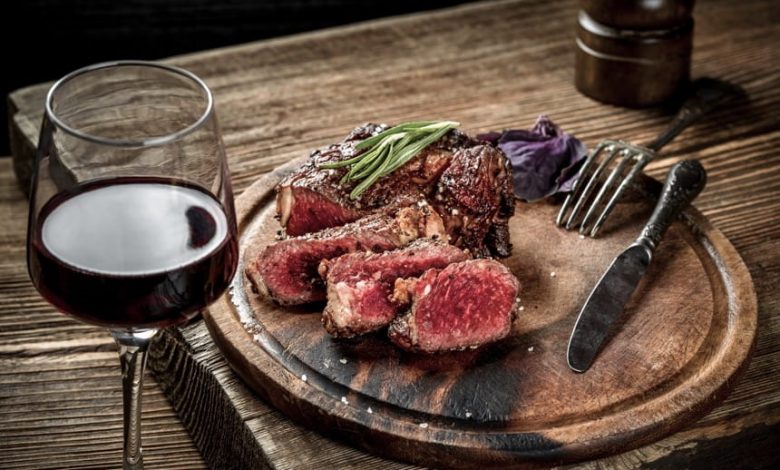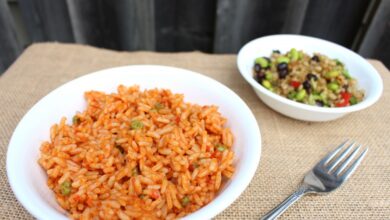Steak + Wine: New Pairings to Try

Like peanut butter and jelly. Or bacon and eggs. Or burger and fries. But only more sophisticated and tasteful.
In wine-producing countries, especially those in Europe, food and wine pairing has come naturally after years of consuming both during meals. The right combination of a dish and wine can elevate one’s dining experience.
The logic of food and wine pairing
Most of the typical food and wine pairings come as an offshoot of the local tradition of consuming local dishes with wines made within a region.
That is why you would typically consume a regional Italian dish with a wine cultivated nearby. And by that same logic, you shouldn’t pair Asian dishes with say, a German wine.
In a sense, there was no apparent logic behind traditional food pairings. Instead, the concept operated upon the idea of consuming local goods.
But as cuisines from different countries enter the global arena, how do the experts match dishes with varying types of wines?
Pairing concepts
While talking with your server or sommelier at a steakhouse in Abu Dhabi, one of the terms that you’ll likely hear about wines is the body. Some wines have a light, medium, or full body. What does this mean, exactly?
In a nutshell, body refers to the time the taste of the wine lingers in your mouth. For example, a light-bodied wine lingers in your mouth for just a few seconds before disappearing. In contrast, a full-bodied wine’s taste can stay in your mouth for a couple of minutes.
Apart from the body, a sommelier also takes into account the temperature of a dish when finding the right type of wine to pair.
For example, a wine expert will pair a roasted chicken served fresh out of the oven with a wine that is best served at room temperature, like a Pinot noir.
On the other hand, if the chicken is served as part of a salad, your sommelier will recommend a wine that is best served chilled, like a rosé.
Finally, wine experts take into account the fat content of the food. Wine contains tannins which are responsible for both its dryness and astringency. The fat in your food can minimize the effects of these tannins in the wine.
Why steak is often paired with red wine
Why is steak typically paired with red wine and not white wine?
It all boils down to the chemicals found in wine, the fermentation process, and the compounds found in food, in this case, steak.
When you enjoy your steak with red wine, the tannins found in your drink help soften the fat, allowing more flavors to be drawn out from the meat and to be released in your mouth. In turn, the fat content of the steak mellows the astringency of the wine. This results in the release of fruity flavors from the wine.
Tannins are naturally found in plants and their different parts. Additionally, wines get tannins from the wooden barrels where they are stored.
Compared to red wine, white wine is more acidic. This acidity makes it a perfect partner for seafood. Consuming red wine with fish and other seafood doesn’t usually work because the drink’s tannin content cancels out the delicate flavors of the dish. Plus, some say that red wine creates a metallic aftertaste when consumed with seafood.
Beyond red wines
Red meats, especially steaks, have been traditionally paired with red wines. While that idea still holds water, you might get the most out of your next order of steak with a more nuanced pairing.
The next time you order steak, consider the following pairings.
Ribeye
Many consider the ribeye as one of the best steak cuts because of its juiciness and flavor. Also known as the “cowboy ribeye,” this popular cut may be served with the rib bone attached or removed.
For this steak cut, you would want a wine that has a high amount of tannins like a Cabernet Sauvignon. This high amount of tannins allows the wine to soar above the fat and juice of the ribeye.
On the other hand, if you are craving for a fruity drink that provides contrast to the ribeye’s flavor and juice, you might want to consider a Zinfandel.
Other recommended wines include Bordeaux and Merlot.
Filet mignon
If you prefer to order filet mignon because of its leanness, tenderness, and delicate flavor, consider pairing it with a Pinot noir. The wine’s oakiness and fruitiness go well with this steak cut.
On the other hand, if the filet mignon is served with a sauce, you should opt for something richer, like a Chardonnay.
Other recommended wines are Merlot, Malbec, Shiraz, and Sangiovese.
T-bone
Cut from a cow’s short loin, the T-bone or porterhouse cut contains parts from both the filet mignon and New York strip which are separated by a bone. The moderate amount of tannins and fruitiness of the Syrah makes it a good pair for the T-bone.
If the steak is served with a creamy sauce, you might want to pair it with either a Merlot or Cabernet Sauvignon.
New York strip
Among the different cuts of steaks, the New York strip is considered to be the most versatile, combining rich flavors with the perfect amount of tenderness. It can be seasoned with a simple salt and pepper mix or with something bolder like garlic and onion.
The cut is traditionally paired with Cabernet Sauvignon because the wine works well with the fattiness of the cut.
That, however, does not mean that you cannot pair the New York strip with lighter wines. If you wish to go against the grain, you might want to order a rosé or Pinot noir.
Go beyond your usual pairing
While you can never go wrong by pairing steak with red wine, you might be doing yourself a great disservice by ignoring other potential pairings.
Venture out of your comfort zone the next time you visit your favorite steakhouse in Abu Dhabi. You’ll be surprised at the gustatory delights you might have been missing.
AUTHOR BIO
Chiara Bisignani is the F&B Marketing Executive at Saadiyat Beach Club. She oversees website maintenance, PR requests, marketing initiatives and all general guests’ enquiries for the company’s destinations of KOI Restaurant & Lounge, Boa Steakhouse and Caramel Restaurant and Lounge in Abu Dhabi.






